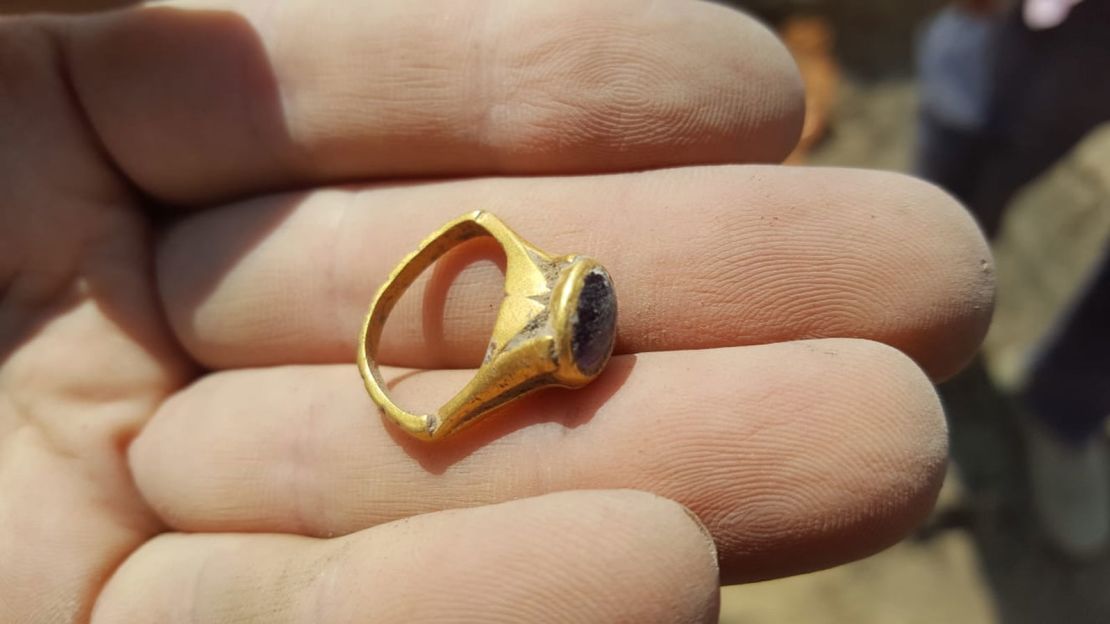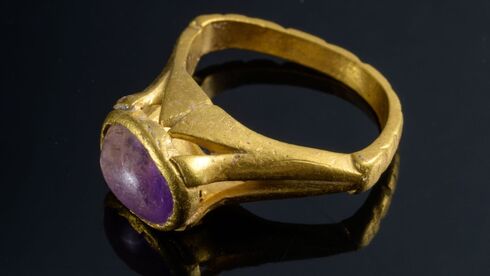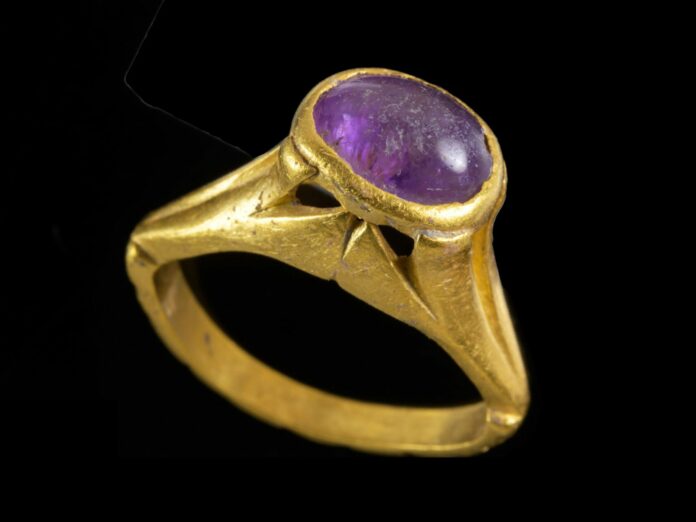Modern remedies for hangovers often involve a mix of raw eggs, spicy Bloody Marys, or a hefty dose of water. However, an intriguing discovery in Israel has unveiled a unique ancient solution that dates back to the Byzantine era. Archaeologists have uncovered a gold ring adorned with a purple amethyst, which may have been worn to mitigate the ill effects of excessive drinking.
Discovery at Yavne

The ring was excavated from Yavne, a city with a rich history, particularly noted for being the site of the largest known Byzantine-era winery. According to the Israel Antiquities Authority, this ancient artifact was unearthed near the remains of a warehouse that once housed amphorae, large jars used for storing wine. This discovery, situated approximately 150 meters (492 feet) from the winery, suggests that the ring was closely linked to the wine industry of the time.
Significance of Amethyst
Amethyst, a purple gemstone, was believed to possess various virtues in antiquity. Archaeologist Amir Golani highlighted that this gemstone was reputed to counteract the side effects of alcohol consumption, including hangovers. “Many virtues have been attached to this gem,” Golani remarked, noting its association with preventing the adverse effects of drinking. This belief in amethyst’s protective qualities aligns with its historical use in both Roman and Byzantine cultures.
Historical Context and Speculation

The ring’s excavation site has been dated to around the 7th century, marking the transition from the Byzantine era to the Early Islamic period. However, it is possible that the ring could be even older, potentially from as early as the 3rd century CE. Gold rings inlaid with amethyst were known in the Roman world, suggesting that this particular piece might have belonged to an elite member of society.
Golani speculated that the ring was likely owned by someone affluent, as the presence of such jewelry typically indicated status and wealth. “The wearing of the jewel indicated their status and wealth,” Golani explained. “Such rings could be worn by both men and women.” Elie Haddad, a co-director of the excavation, suggested that the ring could have belonged to the owner of the winery, a foreman, or even an unfortunate visitor who lost it.
Ancient Hangover Remedies

The amethyst ring is not the only ancient remedy for hangovers. In 2015, researchers uncovered a 1,900-year-old Greek papyrus that described a necklace of laurel leaves as a cure for drunken headaches. Similarly, in ancient Mesopotamia, a physician recommended a concoction of licorice, oleander, beans, oil, and wine for those suffering from the effects of strong wine.
Conclusion
The discovery of this ancient amethyst ring provides a fascinating glimpse into the past, revealing how historical cultures sought to address the common problem of hangovers. Whether worn for its purported protective properties or as a symbol of status, this artifact underscores the enduring human quest for relief from the consequences of indulgence. As we continue to unearth and study such relics, they offer valuable insights into the daily lives and beliefs of our ancestors, enriching our understanding of history and its ongoing influence on modern practices.
